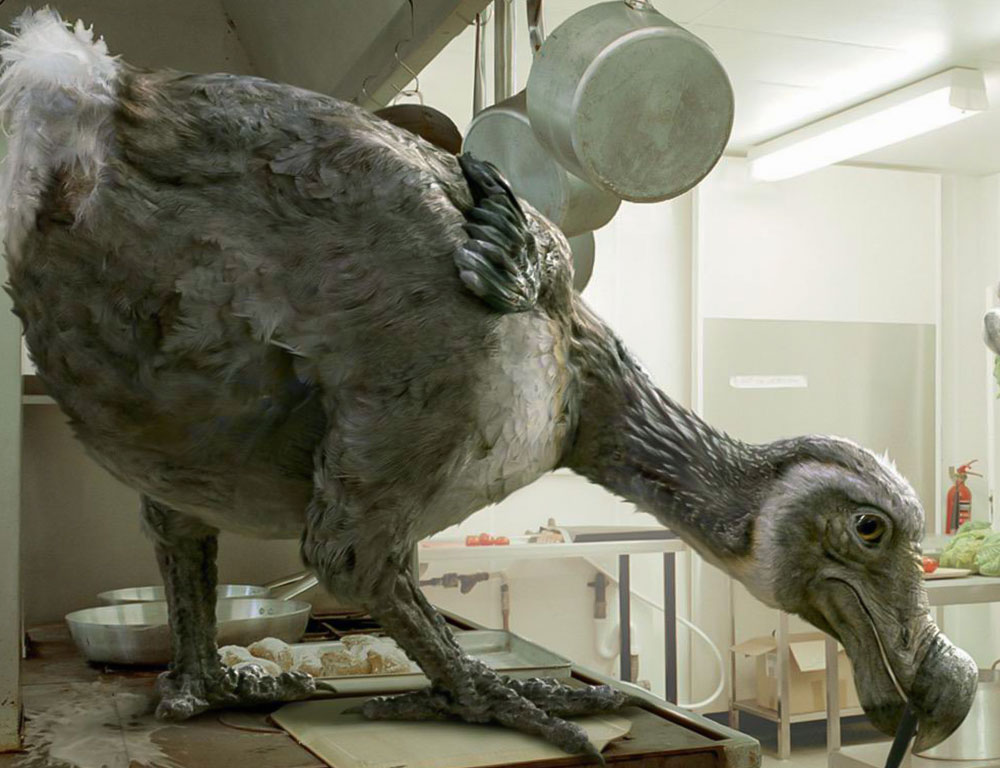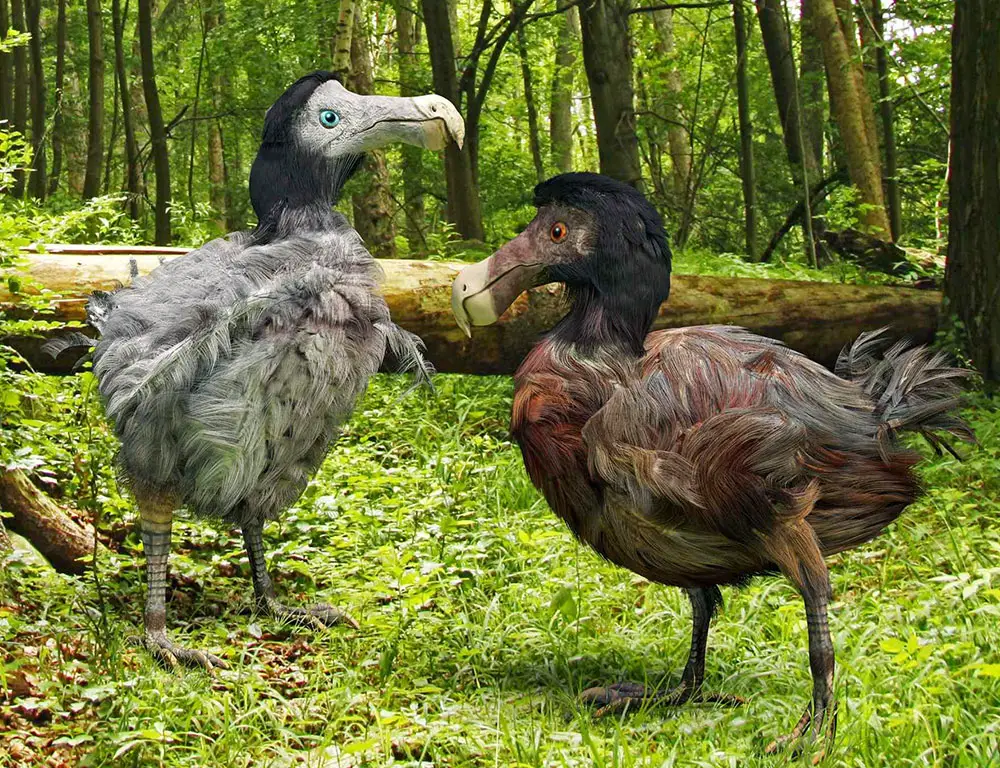The Raphinae, encompassing the iconic Dodo and Rodriguez Solitaire, represents a captivating yet tragically extinct family of birds that once inhabited the Indian Ocean islands near Madagascar.
Their story offers a unique window into the enigmatic processes of evolution, shaped by the isolation of their island habitats.
Despite their robust stature and lack of natural predators, the Raphinae faced an untimely demise at the hands of human interference, serving as a stark reminder of our impact on the natural world.
In our exploration, we will unravel the mysteries surrounding their extinction and delve into the fascinating journey of adaptation and survival undertaken by these remarkable avian species.

Evolution and Classification of Raphinae
The evolution and classification of Raphinae, which includes the Dodo (Raphus cucullatus) and the Rodrigues Solitaire (Pezophaps solitaria), provide valuable insights into the evolutionary history of these now-extinct birds.
Here’s an overview of their evolution and taxonomic classification:
Taxonomic Classification
Raphinae is a subfamily within the bird family Columbidae, which includes pigeons and doves. This classification places Raphinae within the broader context of avian taxonomy, tracing its lineage back to the Aves class.
Genus and Species
Within the subfamily Raphinae, the primary focus is on the genus Raphus, which includes the Dodo (Raphus cucullatus) and the Rodrigues Solitaire (Pezophaps solitaria).
These two species are the most well-known members of the Raphinae family and are endemic to islands in the Indian Ocean.
Island Endemism
The Dodo was native to Mauritius, while the Rodrigues Solitaire inhabited Rodrigues Island.
The isolation of these islands played a significant role in the evolution of Raphinae, leading to distinct adaptations in response to their unique environments and lack of natural predators.
Distinct Evolutionary Paths
Despite their close relationship as members of the Raphinae subfamily, the Dodo and Rodrigues Solitaire evolved independently on separate islands.
This resulted in similarities in their physical characteristics and behaviors, such as flightlessness and ground-dwelling habits, but also distinct differences shaped by their respective island habitats.
Extinction and Scientific Interest
Both the Dodo and Rodrigues Solitaire became extinct in the 17th and 18th centuries, primarily due to human activities such as hunting, habitat destruction, and the introduction of invasive species.
Despite their extinction, these birds continue to captivate scientific interest and inspire research into their evolutionary history, ecological roles, and the factors contributing to their demise.
Physical Characteristics of Raphinae

The physical characteristics of Raphinae, including the Dodo and Rodrigues Solitaire, were shaped by their evolutionary history and adaptation to their island habitats.
Here’s an overview of their physical traits:
Size
Raphinae exhibit notable sexual dimorphism, with males significantly larger than females.
Males can reach lengths of 90 cm (35 in) and weigh up to 28 kg (62 lb), while females are notably smaller. This size discrepancy is a characteristic feature of the species.
Body Structure
These birds had robust bodies with stout legs suited for their ground-dwelling lifestyle. Their bodies were adapted for walking and foraging on the forest floors of their island habitats.
Beak
A distinguishing feature of Raphinae is their unique beak structure. The Dodo had a robust, hooked beak that was well-suited for consuming various foods, including large fruits and possibly small vertebrates.
The Rodrigues Solitaire had a slightly different beak structure, more pointed and adapted for cracking nuts and seeds.
Feathers
Raphinae typically had greyish or brownish plumage with lighter undersides. Their feathers were soft and fluffy, lacking the aerodynamic properties necessary for flight. Specialized tufts of feathers, such as curly feathers on the rear end, added to their distinctive appearance.
Flightlessness
One of the most notable physical characteristics of Raphinae was their inability to fly. This trait likely evolved due to the absence of natural predators on their island habitats, rendering flight unnecessary for escape or foraging.
Sexual Dimorphism
While specific details may vary between species, some Raphinae, like the Dodo, exhibited sexual dimorphism, where males and females differed in physical appearance. For example, male Dodos were often more extensive and more robust than females.
Behavior of Raphinae
The behavior of Raphinae, including species like the Dodo and Rodrigues Solitaire, was shaped by their unique evolutionary history and island habitats.
Here’s an overview of their behavior:
Mating Rituals
Raphinae engaged in elaborate mating rituals characterized by vocalizations, physical displays, and courtship behaviors. Males often performed intricate dances or displayed their plumage to attract females.
Some species within the Raphinae family may have exhibited mate-guarding behavior, where males actively prevented other males from approaching females during the breeding season.
Feeding Habits
Raphinae had diverse diets depending on their specific species and habitat. While some species primarily fed on fruits, others may have consumed insects, seeds, or small vertebrates.
They demonstrated remarkable adaptability in their feeding habits, adjusting their diets based on seasonal changes and food availability.
For example, they may have focused on fruits in the spring, insects in the summer, seeds in the fall, and small vertebrates in the winter.
Ground-Dwelling Behavior
Raphinae were primarily ground-dwelling birds, spending much time foraging on the forest floors of their island habitats. Their stout legs and large bodies were adapted for walking and maneuvering on the ground.
They built nests on the ground and laid relatively small clutches of eggs.
Social Interactions
While not highly social birds, Raphinae likely interacted with conspecifics during feeding and breeding activities. Observations suggest they formed loose social groups or associations, particularly during mating seasons.
Response to Humans
Raphinae evolved without significant natural predators, which may have influenced their behavior and reactions to other animals, including humans.
Unfortunately, this lack of fear likely contributed to their vulnerability to hunting and exploitation by humans, ultimately leading to their extinction.
Conservation Efforts for Raphinae
Conservation efforts for Raphinae, although the species are extinct, serve as a poignant reminder of the importance of protecting and preserving biodiversity.
Here’s an exploration of these efforts:
Understanding Human Impact
Recognizing that human interference was the primary cause of the extinction of Raphinae species is crucial for shaping conservation efforts. Understanding the historical context of their downfall can inform strategies to prevent similar extinctions in the future.
Establishing Protected Habitats
Conservationists are working to establish and maintain protected areas and wildlife reserves where vulnerable species can thrive. These areas often have strict regulations against hunting and habitat destruction, providing safe havens for endangered wildlife.
Enforcing Legislation
Governments worldwide pass laws and regulations to protect endangered species and their habitats.
These laws deter poaching, habitat destruction, and introducing invasive species, which significantly threaten biodiversity.
Community Education
Educating communities about biodiversity conservation is essential for fostering a culture of environmental stewardship.
By raising awareness about ecosystems’ value and threats, societies can become more conscious of their impact on nature and work towards sustainable solutions.
Expanding Protected Areas
The significant increase in the number of protected areas globally, from 1,000 in 1970 to over 200,000 in 2020, reflects humanity’s growing commitment to preserving biodiversity. These protected areas are crucial in safeguarding vulnerable species and their habitats.
Technological Advances
Technological advances, such as genetic engineering techniques, offer new possibilities for wildlife protection and conservation.
While efforts to resurrect extinct species like Raphinae may face challenges due to the lack of viable DNA samples, these technologies promise to preserve genetic diversity and potentially restore ecosystems.
FAQs
Where were Raphinae birds found?
Raphinae birds were primarily found on islands in the Indian Ocean, with the Dodo inhabiting Mauritius and the Rodrigues Solitaire on Rodrigues Island.
Why did Raphinae birds become extinct?
The extinction of Raphinae birds was primarily due to human interference, including habitat destruction and hunting. The introduction of invasive species by humans also contributed to their demise.
How long did Raphinae birds survive after human discovery?
Raphinae birds, particularly the Dodo, became extinct less than 100 years after humans discovered them. This rapid extinction highlights the impact of human activities on vulnerable species.
What were the primary predators of Raphinae birds?
Raphinae birds evolved in environments with no natural predators. However, with the arrival of humans to their island habitats, they faced threats from introduced species such as dogs, cats, and rats, which preyed on their eggs and competed for resources.
Did Raphinae birds have any unique behaviors?
Yes, Raphinae birds exhibited exciting behaviors, such as ground-dwelling nesting habits and unique mating rituals. Some species within the family may have engaged in complex courtship displays and vocalizations to attract mates.
Conclusion
The Raphinae, encompassing the Dodo and Rodrigues Solitaire, represent a poignant chapter in the annals of biodiversity.
These flightless birds, native to Mauritius and Rodrigues Island, evolved in isolation, free from predation and long-distance travel pressures.
However, their rapid extinction, primarily driven by human interference through the introduction of invasive species, serves as a stark reminder of the fragility of ecosystems and the profound impact of our actions on biodiversity.
Their discovery and extinction timeline underscores the urgency of learning from past mistakes to safeguard endangered species. While physically absent, Raphinae persists through scientific inquiry and cultural remembrance.
This exploration underscores the importance of conservation efforts in protecting endangered wildlife and preserving Earth’s rich biological heritage.
| Species | Year Discovered | Year Extinct |
| Dodo Bird | 1598 | 1681 |
| Rodrigues Solitaire | 1693 | 1761 |